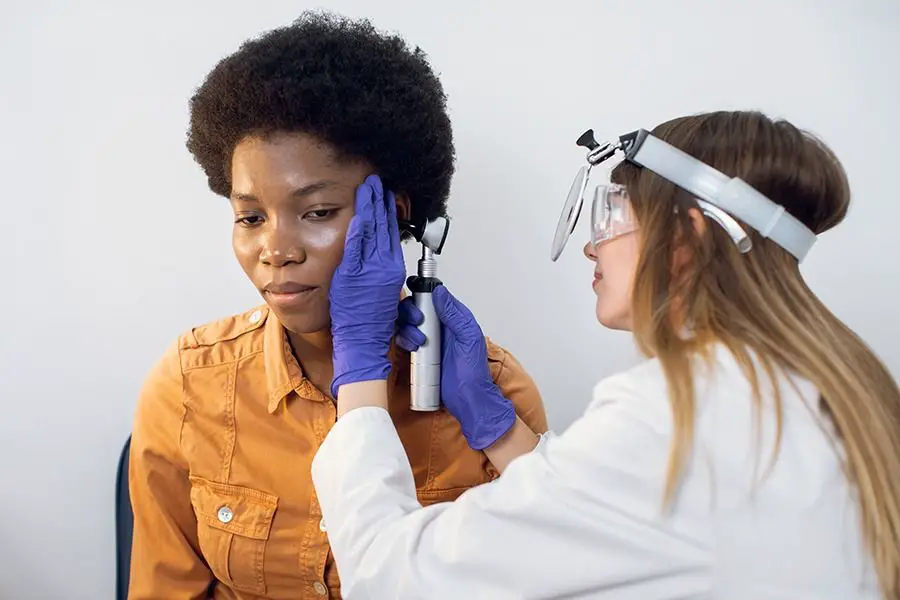Understanding Otosclerosis: A Comprehensive Insight for Patients and Caregivers
Otosclerosis, also knowns as Otospongiosis is a condition that significantly impacts the bones within the ear, leading to progressive hearing loss. This guide aims to provide those affected by otosclerosis and their caregivers with in-depth knowledge and coping strategies, ensuring a smoother journey through this condition.
The Emotional and Psychological Impact of Otosclerosis
Living with Otospongiosis extends beyond the physical symptoms; it encompasses a range of emotional and psychological challenges. The condition can lead to feelings of frustration and isolation due to difficulties in communication and the fear of worsening hearing loss. However, it’s crucial to remember that you are not alone. Numerous resources and support systems are available to assist you in this journey.
The Role of Support Groups and Mental Health Care
Support groups play a vital role in providing a sense of community and understanding. They offer a platform for sharing experiences and receiving emotional support. Additionally, mental health care, including psychotherapy and counseling, is vital in managing stress and adapting to life with hearing loss. Techniques like mindfulness and cognitive-behavioral therapy can be beneficial.
Creating a Supportive Environment
Adjustments are necessary not only for the individual but also for their family and community. Creating a supportive environment involves understanding the individual’s needs, promoting clear communication, and making necessary adaptations at home and work. Assistive listening devices and other hearing aids can significantly enhance quality of life.
Resources for Families and Online Communities
Families can access various resources, including educational materials, workshops, and counseling services, to better understand and manage otosclerosis. Online communities, such as the ‘Otosclerosis and Stapedectomy Support Group’ on Facebook, offer additional platforms for sharing experiences and finding support.
Expanding on Otospongiosis Topics
Advancements in Treatment Options: Recent years have seen significant advancements in the treatment of Otospongiosis. Surgical procedures, such as stapedectomy, have become more refined, offering higher success rates and reduced recovery times. Additionally, the development of new hearing aid technologies and cochlear implants has provided more effective solutions for managing hearing loss associated with otosclerosis.
Research and Developments: Ongoing research in otosclerosis is focused on understanding the genetic factors and pathophysiology of the disease. Studies are exploring the potential links between viral infections and the development of otosclerosis, as well as investigating new pharmacological treatments that could slow down or halt the progression of the condition.
Lifestyle and Dietary Considerations: While there is no specific diet to cure otosclerosis, maintaining a healthy lifestyle can be beneficial. A balanced diet rich in calcium and vitamin D, regular exercise, and avoiding excessive noise exposure can contribute to overall ear health and potentially slow the progression of otosclerosis.
FAQs About Otosclerosis
- What is Otospongiosis? Otospongiosis is a condition where abnormal bone growth in the ear leads to hearing loss.
- Can Otospongiosis be cured? There is no cure for otosclerosis, but treatments like surgery and hearing aids can manage symptoms.
- Is Otospongiosis hereditary? Otosclerosis can be hereditary, with genetic factors playing a role in its development.
- Does otosclerosis worsen over time? Otosclerosis typically progresses gradually, potentially leading to more significant hearing loss over time.
- Are there any lifestyle changes that help with Otospongiosis? A healthy lifestyle, including a balanced diet and avoiding loud noises, can help manage otosclerosis.
- Can children develop Otospongiosis? Otosclerosis usually develops in young adults but can occasionally affect children.
Practical Tips for Managing Otosclerosis
- Regular Hearing Check-ups: Schedule regular appointments with an audiologist to monitor your hearing.
- Explore Hearing Aids: Investigate different types of hearing aids to find the best fit for your needs.
- Stay Informed: Keep up-to-date with the latest research and treatment options for otosclerosis.
- Join Support Groups: Connect with others who have otosclerosis to share experiences and advice.
- Protect Your Ears: Use ear protection in noisy environments to prevent further hearing damage.
Annotated References
- “Otosclerosis and Stapedectomy Recovery,” American Academy of Otolaryngology-Head and Neck Surgery. This reference provides detailed information on surgical treatments for otosclerosis and recovery expectations.
- “Genetic Studies in Otosclerosis: A Review,” published in the International Journal of Audiology. This academic article reviews the genetic aspects and research developments in otosclerosis.
- NCBI Bookshelf – Otospongiosis: This resource provides detailed information about Otosclerosis, including its abnormal bone remodeling in the middle ear. Read more on NCBI.
- PubMed – Otospongiosis: This is a scientific publication that offers insights into Otosclerosis, its causes, and characteristics. Access the publication on PubMed.
Learn more
HEARING QUEST
TINNITUS GURU
HEARING LOSS NEWS






